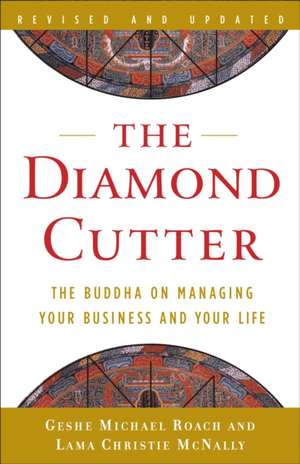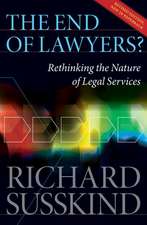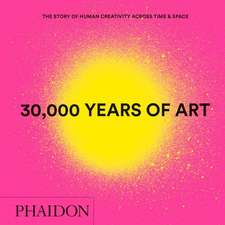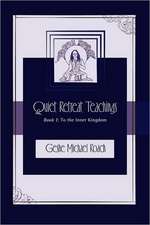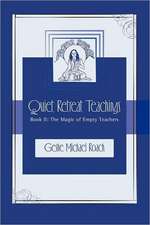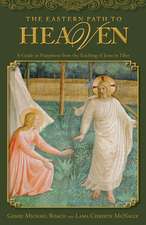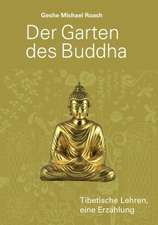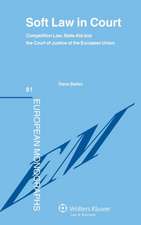The Diamond Cutter: Recomandări Viața de Freelancer
Autor Geshe Michael Roach, Lama Christie McNallyen Limba Engleză Paperback – 30 iun 2009
The now classic work on Buddhism and business from the foremost American teacher of Tibetan Buddhism— reissued in a tenth anniversary edition with compelling case studies that showcase its principles in action around the globe.
With a unique combination of ancient and contemporary wisdom from Tibetan Buddhism, THE DIAMOND CUTTER presents readers with empowering strategies for success in their personal and professional lives. The book is presented in three layers. The first is a translation of The Diamond Sutra, an ancient text of conversations between the Buddha and his close disciple, Subhuti. The second contains quotes from some of the best commentaries in the Tibetan Buddhist tradition. And the third layer, the main text, is the practical application of Buddhist philosophies to the world of business, based upon Geshe Michael Roach's seventeen-years of experience as an employee of the Andin International Diamond Corporation, a company that grew during his tenure from four employees to a world leader in the jewelry industry.
Roach’s easy style and spiritual understanding make THE DIAMOND CUTTER an invaluable source of timeless wisdom for those familiar or unfamiliar with Tibetan Buddhism. His focus on practical personal and business applications has resonated with and changed the lives of hundreds of thousands of individuals the world over since its original publication.
Din seria Recomandări Viața de Freelancer
-
 Preț: 59.92 lei
Preț: 59.92 lei -
 Preț: 42.78 lei
Preț: 42.78 lei -
 Preț: 50.47 lei
Preț: 50.47 lei -
 Preț: 118.52 lei
Preț: 118.52 lei - 23%
 Preț: 58.59 lei
Preț: 58.59 lei - 24%
 Preț: 42.77 lei
Preț: 42.77 lei -
 Preț: 81.84 lei
Preț: 81.84 lei -
 Preț: 62.88 lei
Preț: 62.88 lei -
 Preț: 56.73 lei
Preț: 56.73 lei - 15%
 Preț: 81.71 lei
Preț: 81.71 lei - 15%
 Preț: 71.12 lei
Preț: 71.12 lei -
 Preț: 184.13 lei
Preț: 184.13 lei -
 Preț: 224.78 lei
Preț: 224.78 lei -
 Preț: 69.53 lei
Preț: 69.53 lei -
 Preț: 69.00 lei
Preț: 69.00 lei - 17%
 Preț: 57.97 lei
Preț: 57.97 lei - 16%
 Preț: 63.89 lei
Preț: 63.89 lei - 24%
 Preț: 82.37 lei
Preț: 82.37 lei - 24%
 Preț: 62.36 lei
Preț: 62.36 lei -
 Preț: 94.14 lei
Preț: 94.14 lei - 17%
 Preț: 89.60 lei
Preț: 89.60 lei -
 Preț: 64.99 lei
Preț: 64.99 lei - 24%
 Preț: 61.96 lei
Preț: 61.96 lei -
 Preț: 59.00 lei
Preț: 59.00 lei - 16%
 Preț: 79.73 lei
Preț: 79.73 lei - 20%
 Preț: 212.80 lei
Preț: 212.80 lei -
 Preț: 168.64 lei
Preț: 168.64 lei - 16%
 Preț: 69.38 lei
Preț: 69.38 lei - 20%
 Preț: 86.60 lei
Preț: 86.60 lei -
 Preț: 104.95 lei
Preț: 104.95 lei - 26%
 Preț: 70.07 lei
Preț: 70.07 lei - 27%
 Preț: 55.32 lei
Preț: 55.32 lei - 17%
 Preț: 72.67 lei
Preț: 72.67 lei -
 Preț: 110.15 lei
Preț: 110.15 lei - 15%
 Preț: 135.40 lei
Preț: 135.40 lei -
 Preț: 45.00 lei
Preț: 45.00 lei -
 Preț: 45.00 lei
Preț: 45.00 lei -
 Preț: 59.00 lei
Preț: 59.00 lei -
 Preț: 45.00 lei
Preț: 45.00 lei -
 Preț: 47.00 lei
Preț: 47.00 lei -
 Preț: 43.23 lei
Preț: 43.23 lei
Preț: 87.95 lei
Nou
16.83€ • 17.51$ • 13.90£
Carte disponibilă
Livrare economică 24 martie-07 aprilie
Livrare express 08-14 martie pentru 19.08 lei
Specificații
ISBN-10: 038552868X
Pagini: 278
Ilustrații: black & white illustrations
Dimensiuni: 134 x 204 x 16 mm
Greutate: 0.22 kg
Ediția:Revised, Update
Editura: Doubleday Religion
Seria Recomandări Viața de Freelancer
Notă biografică
Extras
Where the Wisdom Comes From
In the ancient language of India, this teaching is called the Arya Vajra Chedaka Nama Prajnya Paramita Mahayana Sutra.
In the language of Tibet, it is called the Pakpa Sherab Kyi Paroltu Chinpa Dorje Chupa Shejawa Tekpa Chenpoy Do.
In the English language, it is called The Diamond Cutter, a High Ancient Book from the Way of Compassion, a Book which Teaches Perfect Wisdom. =
What makes this business book different from any other you have ever read? It’s the source of what we have to say here: an ancient book of Buddhist wisdom called The Diamond Cutter. And the lines above are how the book starts out.
Hidden in The Diamond Cutter is the ancient wisdom that we used to help make Andin International a company with sales of over $100 million per year. It’s good to know a little about this important book at the beginning, to recognize the role it has played throughout the history of the Eastern half of our world.
The Diamond Cutter is the oldest dated book in the world that was printed, rather than being written out by hand. The British Museum holds a copy that is dated a.d. 868, or about 600 years before the Gutenberg Bible was produced.
The Diamond Cutter is a written record of a teaching given by the Buddha over 2,500 years ago. In the beginning, it was passed down by word of mouth, and then–as writing first developed–it was inscribed onto long palm leaves. These were durable fronds of palm on which the words of the book were first scratched, using a needle. Then charcoal dust was rubbed into the scratches left by the needle. Books that were made this way are still to be found in southern Asia, and remain quite legible.
The loose palm leaves would be kept together in one of two ways. Sometimes a hole would be bored with an awl through the middle of the stack of leaves, and a string passed through to keep the pages together. Other books were kept wrapped in cloths.
The original Diamond Cutter was taught by the Buddha in Sanskrit, the ancient language of India, which we guess is about four thousand years old. When the book reached Tibet, about a thousand years ago, it was translated into Tibetan. Over the centuries in Tibet it has been carved onto woodblocks, and printed onto long strips of handmade paper by coating the block with ink and then pressing the paper with a roller against the block. These long strips of paper are stored in bright cloths of saffron or maroon, a throwback to the days of the palm leaves.
The Diamond Cutter also spread to other great countries of Asia, including China, Japan, Korea, and Mongolia. Over the last twenty-five centuries it has been reprinted in the languages of these countries countless times, and its wisdom passed down in an unbroken lineage, from the lips of the teachers of each generation to the ears of the students of the next. In Mongolia, the book was considered so important that every family would keep a copy carefully preserved on an altar in their home. Once or twice a year, the local Buddhist monks would be asked to come to the home and read the text out loud to the family, in order to impart the blessing of its wisdom.
The wisdom of The Diamond Cutter is not easily won. The original teaching, like so many teachings of the Buddha, is cloaked in highly mystical language that can only be revealed by a living teacher, using the great explanations that have been written over the centuries. In Tibetan we have three of these older explanations, ranging in age from about sixteen centuries old to a mere eleven hundred years.
More important, we have recently located another commentary on the work, one which is much more recent, and much more easy to understand. During the last twelve years, a group of colleagues and myself have been engaged in the Asian Classics Input Project, dedicated to preserving the ancient books of Tibetan wisdom. Over the past thousand years, these books have been kept in the great monasteries and libraries of Tibet herself, protected from war and invaders by the great natural wall of the Himalayan Mountains. This all changed with the invention of the airplane, and in 1950 Tibet was invaded by Communist China.
During the invasion and subsequent occupation–which continues today–over five thousand libraries and monastic colleges holding these great books were destroyed; only a handful of the books were carried out by refugees making the dangerous journey on foot over the Himalayas near Mount Everest. To get a feeling for the destruction, imagine that some powerful country has attacked the United States, and burned almost every single college and university, and all the books in all their libraries. Imagine that the only books left are those that have been carried out in their hands by refugees, journeying on foot for the several weeks or months it would take to walk to Mexico.
The Input Project has trained Tibetan refugees in camps in India to type these endangered books onto computer disks; they are then organized on CD-ROM or the Web, and distributed without charge to thousands of scholars around the world. So far we have saved about 150,000 pages of wood-block manuscripts this way, going to the far corners of the world to locate the books that never made it out of Tibet.
Deep in a dusty collection of manuscripts in St. Petersburg, Russia, we were fortunate enough to find a copy of a wonderful explanation of The Diamond Cutter brought back to Russia by early explorers who visited Tibet. This commentary is called Sunlight on the Path to Freedom, and it was written by a great Tibetan Lama named Choney Drakpa Shedrup, who lived from 1675 to 1748. Coincidentally, this Lama comes from the Tibetan monastery where I completed my own studies: Sera Mey. His nickname, over the centuries, has been “Choney Lama,” or the “Lama from Choney,” an area in east Tibet.
Throughout this book we will be using the original words of The Diamond Cutter, along with the text of Sunlight on the Path to Freedom. This is the first time that this important explanation has ever been translated into English. Along with the selections from these two great works we will include explanations that have been passed down orally throughout the last twenty-five centuries, as I received them from my own Lamas. Then finally we will add actual incidents from my own life in the arcane world of the international diamond business, to demonstrate how the secrets of this ancient wisdom can make your own work and life a more certain success.
Recenzii
Descriere
The now classic work on Buddhism and business from the foremost American teacher of Tibetan Buddhism— reissued in a tenth anniversary edition with compelling case studies that showcase its principles in action around the globe.
With a unique combination of ancient and contemporary wisdom from Tibetan Buddhism, THE DIAMOND CUTTER presents readers with empowering strategies for success in their personal and professional lives. The book is presented in three layers. The first is a translation of The Diamond Sutra, an ancient text of conversations between the Buddha and his close disciple, Subhuti. The second contains quotes from some of the best commentaries in the Tibetan Buddhist tradition. And the third layer, the main text, is the practical application of Buddhist philosophies to the world of business, based upon Geshe Michael Roach's seventeen-years of experience as an employee of the Andin International Diamond Corporation, a company that grew during his tenure from four employees to a world leader in the jewelry industry.
Roach’s easy style and spiritual understanding make THE DIAMOND CUTTER an invaluable source of timeless wisdom for those familiar or unfamiliar with Tibetan Buddhism. His focus on practical personal and business applications has resonated with and changed the lives of hundreds of thousands of individuals the world over since its original publication.
